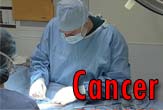Let's Talk About Rectal Cancer, Shall We?

This Week's Question: I've noticed that today people talk openly about rectal cancer. This isn't something you used to discuss in polite company. Why is this? There is a new attitude that protecting your life is more important than protecting your sensibilities. I think the new openness is helping to reduce cancer deaths.
This reminds me of my friend, Pete, who has a "colonoscopy rule." He insists that, if a bunch of us geezers are talking about aches, maladies and visits to the doctors, everyone has to change the subject as soon as someone uses the word "colonoscopy." Usually we switch to grandchildren, which is a lot more fun.
Colorectal cancer — cancer of the colon or rectum — is the second leading cause of death from cancer in the United States. Early detection of colon cancer is especially important because, if it is found in its early stages, it can be cured nine out of ten times.
Who's at risk? The chances of getting it increase with age. But other risk factors include polyps, your history, diet and whether you've had ulcerative colitis.
Polyps are benign growths on the inner wall of the colon and rectum. Not all polyps become cancerous, but nearly all colon cancers start as polyps.
Colorectal cancer seems to run in families. And, someone who has already had colorectal cancer may develop this disease a second time. So greater vigilance is a good idea if you or your relatives have had it.
This form of cancer is more likely among people on a diet high in fat, protein, calories, alcohol, and both red and white meat. Low-fat, high-fiber diets seem better for the colon.
Get the world’s most fascinating discoveries delivered straight to your inbox.
Ulcerative colitis is a condition in which there is a chronic break in the lining of the colon. Having this condition increases a person's chance of developing colorectal cancer.
The following are some symptoms of colorectal cancer: blood in the stool, diarrhea, constipation, stools that are narrower than usual, frequent gas pains or cramps, unexplained weight loss, unrelieved fatigue, vomiting.
Go to your doctor if you have symptoms. The medical profession has many detection tools. These include: a test to check for hidden blood in the stool; a sigmoidoscope, a lighted instrument for examining the rectum and lower colon; a colonoscope, a lighted instrument to examine the rectum and entire colon; a barium enema with a series of x-rays of the colon and rectum; a digital rectal exam to feel for abnormal areas.
Two recent studies showed that colonoscopy can find many pre-cancerous polyps that sigmoidoscopy misses. Another major advantage of the colonoscopy is that it enables the doctor to remove any polyps found during the procedure.
There is a "virtual colonoscopy," a minimally invasive procedure. Doctors are able to see the entire colon using 3-D computer graphics from a computerized tomography scan, or CT scan. Known as "CT colonography," this exam is an alternative for patients who are at risk of complications from colonoscopy such as patients who are frail. If a virtual colonoscopy finds significant polyps, they have to be removed by conventional colonoscopy.
- Robots Tapped For Colonoscopy Work
- Exciting New Cancer Treatments Emerge Amid Persistent Myths
- The Top 10 Worst Hereditary Conditions
The Healthy Geezer column publishes each Wednesday on LiveScience. If you would like to ask a question, please write fred@healthygeezer.com. © 2009 by Fred Cicetti.


